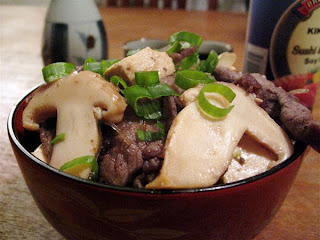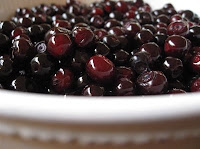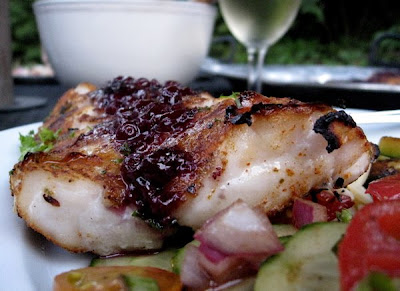 This is the mushroom that kick-started a fungal gold rush in the early 90s, introducing hundreds of hopeful new commercial pickers to the “mushroom trail” and changing the non-wood forest products economy probably forever. It’s the matsutake, or pine mushroom (matsu for pine, take for mushroom). The Japanese species is Tricholoma matsutake, while the closely related North American species is named Tricholoma magnivelare.
This is the mushroom that kick-started a fungal gold rush in the early 90s, introducing hundreds of hopeful new commercial pickers to the “mushroom trail” and changing the non-wood forest products economy probably forever. It’s the matsutake, or pine mushroom (matsu for pine, take for mushroom). The Japanese species is Tricholoma matsutake, while the closely related North American species is named Tricholoma magnivelare.
Here’s what happened. The Japanese love their matsutake, and having depleted their own resource in the red pine forests of Japan, they turned to the export market. Commercial pickers in the Pacific Northwest, where the mushroom is found in abundance, cashed in for a few years, getting absurd prices like $50 or even $100 per pound, and then the market collapsed. Turns out matsutake are fairly common in many other temperate conifer forests around the world, including those in China, Korea, and even other parts of North America. It was a simple case of supply outstripping demand. Right now pickers are getting around $6-8 per pound. What galls them most, though, is that Japanese consumers at the other end of the supply chain are still paying top yen for their beloved matsutake, if not the ridiculous prices of a decade ago. Even in this country prime matsutake buttons command an exorbitant price; in Seattle’s Uijimaya market the other day they were going for $49.99 a pound.
 During the go-go years, huge mushroom camps popped up outside of places like Terrace, B.C. (the “Zoo,” as it’s still called) and Crescent Lake, Oregon. The camps grew into little cities where open-air soup kitchens and even brothels catered to the pickers. Meanwhile these same pickers laid claim to productive patches and legend has it there was the occasional gunfight in the woods. When prices fell back to earth many of the pickers stayed in the game, expanding their expertise to other mushrooms or non-wood products such as salal and berries.
During the go-go years, huge mushroom camps popped up outside of places like Terrace, B.C. (the “Zoo,” as it’s still called) and Crescent Lake, Oregon. The camps grew into little cities where open-air soup kitchens and even brothels catered to the pickers. Meanwhile these same pickers laid claim to productive patches and legend has it there was the occasional gunfight in the woods. When prices fell back to earth many of the pickers stayed in the game, expanding their expertise to other mushrooms or non-wood products such as salal and berries.
There’s this lingering rumor that you can still make some money picking mushrooms, so the woods remain full of commercial pickers. The good is that wild mushrooms are now a staple of the best restaurants around the country; the bad is that recreational pickers such as myself must look a little harder for a patch that hasn’t already been picked; and the ugly is that some commercial pickers continue to see the patches, even those on public land, as their own private stashes and will use threats, intimidation, and sometimes even violence to protect “their” crop. Mind you, I’ve never personally encountered such miscreant behavior, but I’ve heard stories and been threatened in an online forum.
 Emotions tend to run high when it comes to matsutake. If commercial pickers or buyers get ahold of this post, don’t be surprised to see angry comments or corrections. To get an idea of the current picking imbroglio, check out this YouTube video made by a buyer in B.C. who’s sympathetic with the plight of pickers (there are several installments).
Emotions tend to run high when it comes to matsutake. If commercial pickers or buyers get ahold of this post, don’t be surprised to see angry comments or corrections. To get an idea of the current picking imbroglio, check out this YouTube video made by a buyer in B.C. who’s sympathetic with the plight of pickers (there are several installments).
On to culinary matters. The matsutake, when young and fresh, is known for its pungent smell, what David Arora, author of Mushrooms Demystified, calls “a provocative compromise between ‘red hots’ and dirty socks.” The aroma is unforgettable, and so is the taste. It only takes a small amount of the mushroom to put its stamp on a dish, and a bunch of them can quickly fill a room with their smell.
As with other cultural icons in the East, many westerners wonder what all the fuss is about. The matsutake is an odd bird, with a flavor that is frankly too intense or unusual for many. It doesn’t work well in traditional western cuisines such as French or Italian. Don’t try cooking it with cream or butter. But when matched with ingredients from the Far East it can be exquisite. There’s a reason why it’s a delicacy in Japan. Try lightly grilling it and eating with a dipping sauce. In stir-fry dishes its meaty texture can be a substitute for animal flesh, as the porcino is in Italy.
Matsutake Sukiyaki
This is a traditional dish made by matsutake hunters while in the woods. A cast iron dutch oven is perfect for cooking it, whether indoors or out. I adapted the recipe from one in Hsiao-Ching Chou’s informative article on matsutake from the October 13, 2004 Seattle Post-Intelligencer. Despite the long list of ingredients, this is a nearly fool-proof dish and fast. For a slightly different approach that can be a lot of fun with a group of friends, try this recipe for Matsutake Sukiyaki Hotpot.
2 cups beef stock
1/2 cup sake
1/4 cup soy sauce
1/4 cup mirin
1 bunch green onions
2 tablespoons peanut oil
1 small yellow onion, cut into 1/2-inch wedges
1 cup Napa cabbage, shredded
1 cup bok choy, shredded
8 ounces matsutake mushrooms, brushed clean, trimmed, and thinly sliced
8 ounces bean thread or cellophane noodles, pre-cooked
1 package (about 14 ounces) firm tofu, cubed
1 1/2 pounds thinly sliced beef
2 tablespoons sugar, optional
1. Combine the stock, sake, mirin, and soy sauce in a pot or kettle and warm over medium heat. Thinly slice enough of the green onion tops to make 1/4 cup; set aside for garnish. Cut the remaining green onions in half.
2. Heat peanut oil in wok or large skillet over medium-high heat. Add the green onions (minus the garnish), yellow onion, cabbage, bok choy, and matsutakes and stir-fry until they begin to soften, 3-5 minutes. Transfer the vegetables and fungi to the broth along with tofu cubes, and keep warm over low heat.
3. Cook the beef quickly in batches, just until nicely browned, 30-60 seconds on each side, drizzling about 2 tablespoons of the warm broth and 1 teaspoon of the sugar over when you turn the meat. Bunch these pieces to one side of the wok/skillet and continue with the remaining meat.
4. Add pre-cooked noodles to bowl and ladle over hot broth, mushrooms, tofu, and vegetables. Top with beef slices and drizzle some of the cooking liquids over. Sprinkle with a garnish of green onion.

For more on the matsutake trade and the mushroom trail, check out this article from The Atlantic by Lawrence Millman, and this one from Whole Earth by David Arora.
Like this:
Like Loading...



















